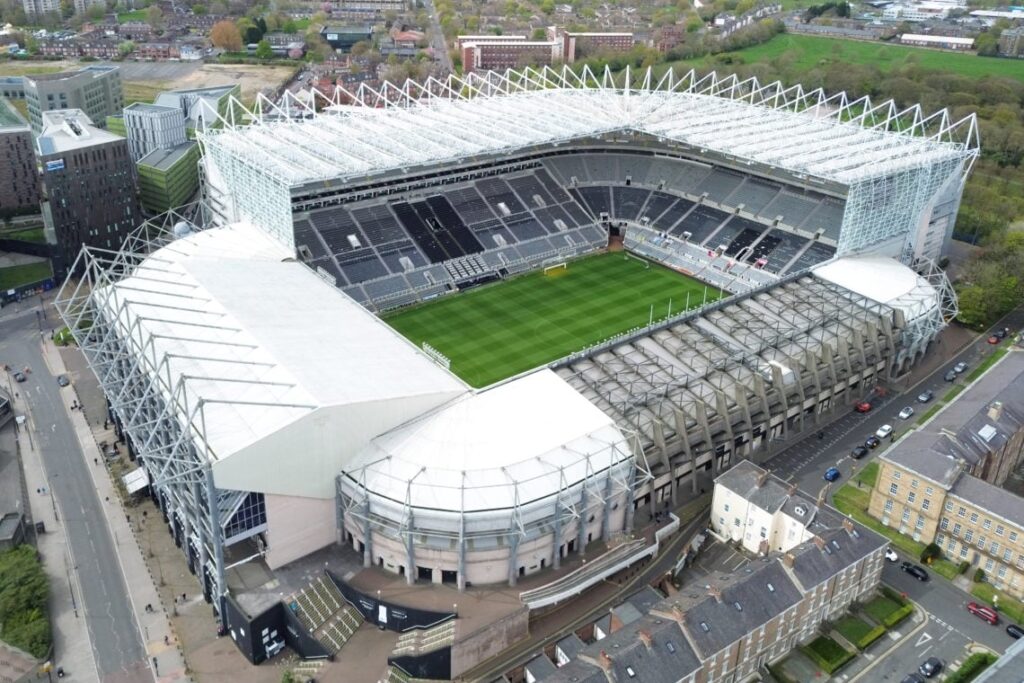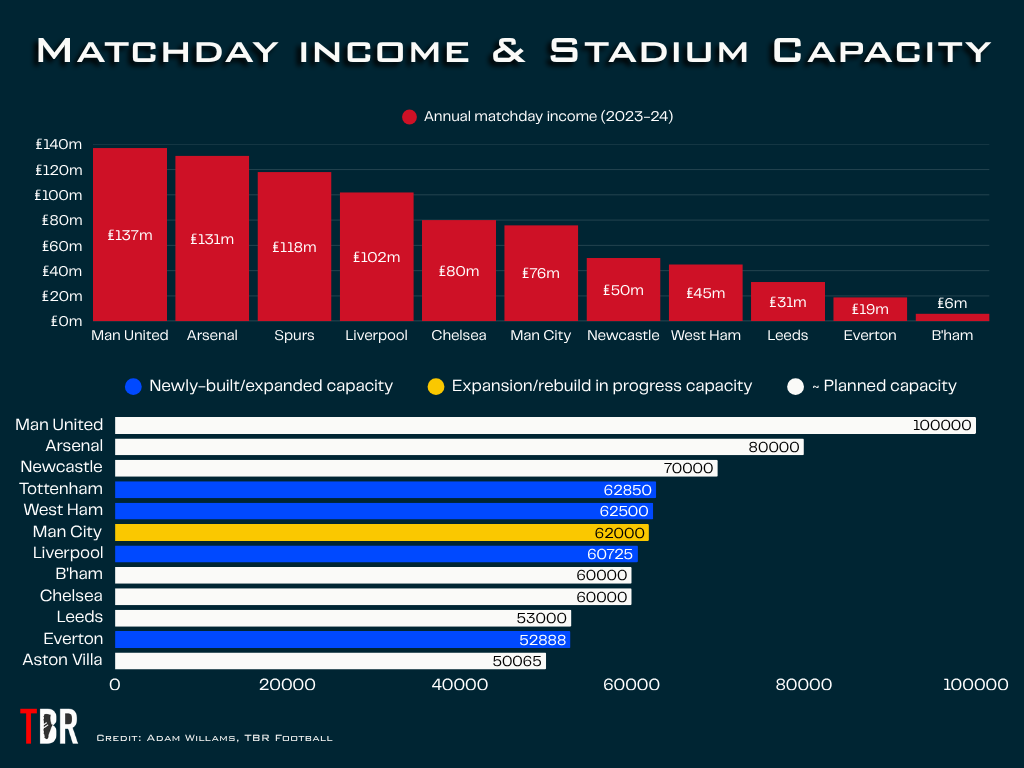For any football club with big ambitions, the stadium is more than just a place to play games. It is the heart of the community, a source of pride, and, very importantly, a major engine for generating money.
Since the Saudi Public Investment Fund (PIF) took over Newcastle United almost four years ago, the club has transformed.
They have reached the Champions League and, most joyously, ended a long trophy drought by winning the League Cup.
The excitement around the team is incredible, and this was clear for everyone to see during a recent cup match against Bradford City. Even though it was a midweek game televised on TV, over 51,000 fans packed into St James’ Park.
This amazing turnout, season after season, shows just how passionate the supporter base is and highlights a pressing issue: the need for a bigger, more modern home.

The demand for tickets is enormous, with stories about sold-out games and ticket reselling becoming common. It’s obvious that the current stadium, as beloved as it is, cannot meet this demand.
This is why, from the very beginning, the new owners have been looking at ways to solve this problem.
The plan has always been to either massively expand St James’ Park or to build a brand new stadium altogether.
The preferred option seems to be constructing a new 70,000-seat arena right next to the current ground, possibly on land that includes part of Leazes Park.
This idea has caused some debate among local residents, which is just one of many challenges the project faces. But the biggest hurdle of all is figuring out how to pay for it.
A project of this scale is incredibly expensive. Experts believe a new stadium could cost well over £1 billion, which is three times more than what the owners paid to buy the entire club in the first place.

For a long time, many people assumed that because PIF is one of the richest investment funds in the world, they would simply pay for the whole thing with cash.
This, however, appears not to be the case. Recent reports from respected financial news sources indicate that the club is talking to banks and other lenders about a different way to pay for the stadium.
The plan is likely a “debt-plus-equity” deal. In simple terms, this means the owners (PIF) will pay for part of the stadium themselves, and the club will take out loans to cover the rest of the cost.
This approach is actually very common in the business world and in football. Clubs like Tottenham and Arsenal used similar models to finance their new stadiums. It’s a way to manage such a huge expense without spending all the cash at once.
However, this method also introduces a new factor that Newcastle must carefully consider: debt. When you borrow money, you have to pay interest on the loan.
This is where a potential complication arises with the Premier League’s financial rules, known as Profit and Sustainability Rules (PSR).
While the money spent on actually building the stadium doesn’t count against the club’s spending limit, the interest payments on the loans might.

Once the stadium is open, the millions of pounds paid in interest each year would likely be considered an expense. This would reduce the amount of money the club is officially allowed to spend on other things, like player transfers and wages.
It’s a delicate balancing act. The club is trying to increase its revenue by building a bigger stadium, but the cost of financing that stadium could temporarily limit its spending power in the transfer market.
So, what would be the financial benefit of a new stadium? The last time the club published its figures, it made around £50 million from matchdays. That includes ticket sales, food, and drinks.
In a new, larger stadium with 70,000 seats, that number would naturally go up. But the real jump in income would come from modern commercial features.
A new stadium would have many more luxury boxes, premium seating areas, and high-end hospitality options. These amenities bring in much more money per fan than a standard ticket.
Because of this, most experts believe that a new stadium could eventually generate over £100 million per year for Newcastle United, more than doubling their current matchday revenue.
This massive increase in income would, in the long run, make the club much richer and more stable, allowing it to compete financially with the very biggest teams.
There is also the potential for a lucrative naming rights deal, which would add even more money. The interest payments on the loan would eat into this new revenue, but the overall financial gain for the club would still be huge.
The journey to a new stadium is a long one, filled with planning permissions, financial negotiations, and construction. But for Newcastle United, it represents the key to unlocking a future where they can not only fill a stadium with fans but also build a team capable of winning the biggest prizes on a regular basis.

